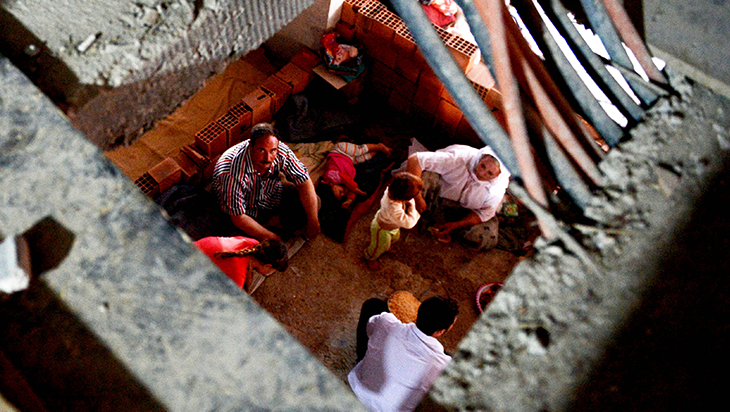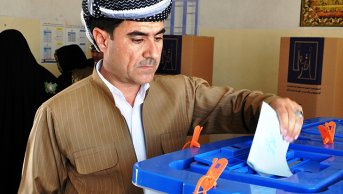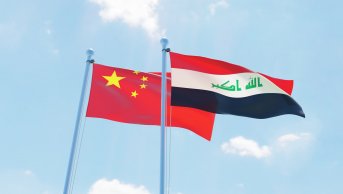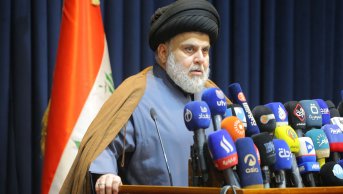Iraqi Yazidis: Trapped between the KDP and the PKK

On August 3, 2014, ISIS invaded Sinjar—a district of the Nineveh Governorate in northern Iraq. The invasion resulted in the abduction and enslavement of thousands of Yazidi women and children and the massacre of more than five thousand Yazidis. According to the UN, nearly three thousand kidnapped women and girls remain missing after being trafficked and enslaved in other ISIS-held territories. For a community that has faced countless attempts at genocide, the impacts of this latest tragedy on the distinct ethno-religious minority group due to their beliefs have carried into today. It is estimated that of the over half million Yazidis who live in this region, a significant proportion continue to live in refugee camps administered by the KRG. Six years after the ISIS attack on the Yazidis, the group appears poised to face another round of threats as the status of Sinjar itself has become a matter of dispute.
The Yazidis have recently become torn between the Kurdistan Democratic Party(KDP)—the largest party in the Kurdistan Regional Government (KRG)—and the Kurdistan Workers’ Party (PKK)—a U.S., UK, and Turkish-designated terrorist organization. Though the KDP has general control of the region, the PKK has over five thousand members stationed mostly in the KRG’s rugged mountainous areas, with the power vacuum left by ISIS allowing for a strengthened PKK presence.
A Contested Region
Sinjar, referred to by Kurds as ‘Shengal’, is administratively affiliated to the Nineveh province but among the fourteen disputed territories claimed by both Baghdad and Erbil, the status of which should be determined according to Article 140 of the Iraqi Constitution. When Saddam Hussein’s regime collapsed in 2003, the KDP and the Patriotic Union of Kurdistan (PUK) sent their fighters into thesedisputed territories, including Sinjar, to establish de facto control over them. While the PUK held areas from Kirkuk southeast toward Iran, the KDP controlled north of Kirkuk to the Syrian border. As such, Sinjar came under the control of KDP’s Peshmerga forces.
When ISIS invaded Sinjar in 2014, thousands of Peshmerga forces withdrew without resistance. Taking advantage of this security gap, the PKK moved into Sinjar and opened a safe corridor for people fleeing from ISIS by establishing a defense-line on Mount Sinjar. The PKK was subsequently able to create a foothold there on the grounds that it was protecting Yazidis from ISIS. Soon after, the PKK established the Sinjar Resistance Units (YBŞ) and Sinjar Women's Units (YJŞ), which led to the foundation of the Sinjar Democratic Autonomous Council and the Yazidi Freedom and Democracy Party, the political wing of the YBS.
In response, and to strengthen its relations with Yazidi sheikhs, emirs, and former Peshmerga forces, the KDP gathered hundreds of Yazidis into one coalition force within the Peshmerga and under the command of Qasim Shesho. However, it is difficult to say that these efforts have improved the troubled relations between the KDP and the Yazidis. Although the International Coalition, Iraqi army, and Peshmerga forces cleared ISIS from Sinjar by November 2015, the PKK insists on maintaining its presence in Sinjar.
The PKK’s ongoing efforts to create a corridor between Sinjar, Qandil, and northern Syria have further soured already tense relations between the KDP and PKK. The PKK accused the former KRG president and KDP leader Massoud Barzani of being a dictator, along with the KDP itself of collaborating with ISIS. Moreover, the PKK, which has occupied more than 500 villages in the KRG, has recently increased its activities to damage the KDP’s control in northern Iraq and Sinjar.
The KDP’s failed efforts to establish total independence in the region have also complicated matters. Following the KRG's independence referendum on September 25, 2017, the Peshmerga forces again had to withdraw from disputed areas such as Kirkuk and Sinjar, which further damaged the KDP image in the Yazidi community. To date, the increased influence of Iran-backed Hashd al-Shaabi forces in Sinjar and their support of the PKK-backed YBŞ has deepened the isolation of the KDP in the region. The KDP is not able to take Sinjar under control of Peshmerga forces by removing the PKK from the region, which has narrowed the KDP's social-political spheres of influence. Meanwhile, the presence of the mostly-Shia Hashd al-Shaabi has started to pose a new threat for the Yazidis. KDP-backed Shesho has a tense relationship with PKK affiliates and the Hashd al-Shaabi, which has committed horrific abuses against civilians in the war zones, documented by human rights groups. It has also been claimed that the Hashdi Shaabi has abducted many Yazidis, and forced people to speak in Arabic in Sinjar.
Sinjar Deal Escalates Tension
The Baghdad government, which sees the inter-Kurdish conflict as an opportunity, appears to have been pleased with the role of Hashd al-Shaabi in Sinjar. However, Turkey has also become involved in the region due to the ongoing presence of the PKK, stating that it will not allow Sinjar to be the “second Qandil“—referencing northern Iraq’s Qandil Mountains, which for decades have served as the PKK’s headquarters in Iraq. Turkey’s recent operations against the PKK in northern Iraq and Sinjar, which aimed to end the PKK’s presence, have naturally added another layer to KDP-PKK tensions.
The KRG’s initial tacit support of Turkey’s anti-PKK operations has since become explicit. Ankara's operational pressure against the PKK has clearly had an impact on Baghdad, as Iraqi Prime Minister Mustafa Kadhimi announced a deal with the KRG on October 9 to "restore stability and normalize conditions" in Sinjar, signed under the supervision of UN Iraq Special Representative Jeanine Hennis-Plasschaert and supported by the United States, Britain, Germany, and Turkey. However, given its principle goal of removing PKK and Hashd al-Shaabi forces from the region, it is likely to further increase the likelihood of military action on the ground, which the Yazidis living in the area see as a major threat.
Unsurprisingly, tensions between the KDP and the PKK have continued to escalate in the wake of the deal. On October 8, the KDP accused the PKK of assassinating Ghazi Salih, a security official working at the Sarzer border crossing in Duhok province. Pressures continued to mount on October 26, when the KRG Security Council announced that twelve PKK members had been caught preparing for a terrorist attack against a foreign diplomatic mission in Erbil. In response, the PKK claimed responsibility for an attack on the KRG pipeline to Turkey near Mardin province, which caused a suspension of oil exports and resulted in an estimated loss of $100 million. Earlier in November, two Peshmerga fighters were killed when the PKK blew up a roadside bomb in the Duhok province.
Although the Iraqi central government deployed two brigades of federal police to Sinjar on November 20 in accordance with the deal to maintain calm, discussions continue over how the PKK-affiliated groups’ withdrawal from the district will be managed. KDP's Sinjar head, Qadir Qachaq, has already claimed that evidence of the PKK’s evacuation at some points is just a ‘drama’ put on for show.
As hostilities between the KDP and the PKK have become increasingly visible, the Yazidis in Sinjar have faced great difficulties. Even before ISIS, Yazidis have been repeatedly attacked due to their beliefs. Mosul, Baghdad, and Diyarbekir pashas along with local Kurdish emirs were all involved in the massacre of Yazidis during the Ottoman period. Sinjar’s status remained tenuous during the mandate period, while Yazidis were exposed to the Arabization campaign of the Ba'ath regime under the name of agricultural reform since 1969. As such, many Yazidis have good reason to fear that rising tensions in the Sinjar region will ultimately leave them paying the price.
It is currently estimated that 350 thousand Yazidis staying in the camps cannot return home due to security and infrastructure problems in addition to this tension. The recent inter-Kurdish conflict is reminiscent of fighting that took place between the KDP and PUK in northern Iraq in the 1990s, which killed hundreds of civilians and troops battling for territorial control. On November 2, former Kurdish President Masoud Barzani stated that “the history witnesses that we have deemed Kurdish-Kurdish war haram [religiously banned].” However, the PKK's resistance to withdrawing from the region within the framework of the Sinjar deal and the increase of the tension with the KDP is likely to continue to escalate, and the Yazidi minority know that they are a common target during periods of tension in Sinjar.
This article was published in Washington Institute website under the title of “Iraqi Yazidis: Trapped Between the KDP and the PKK” on December 23, 2020.








